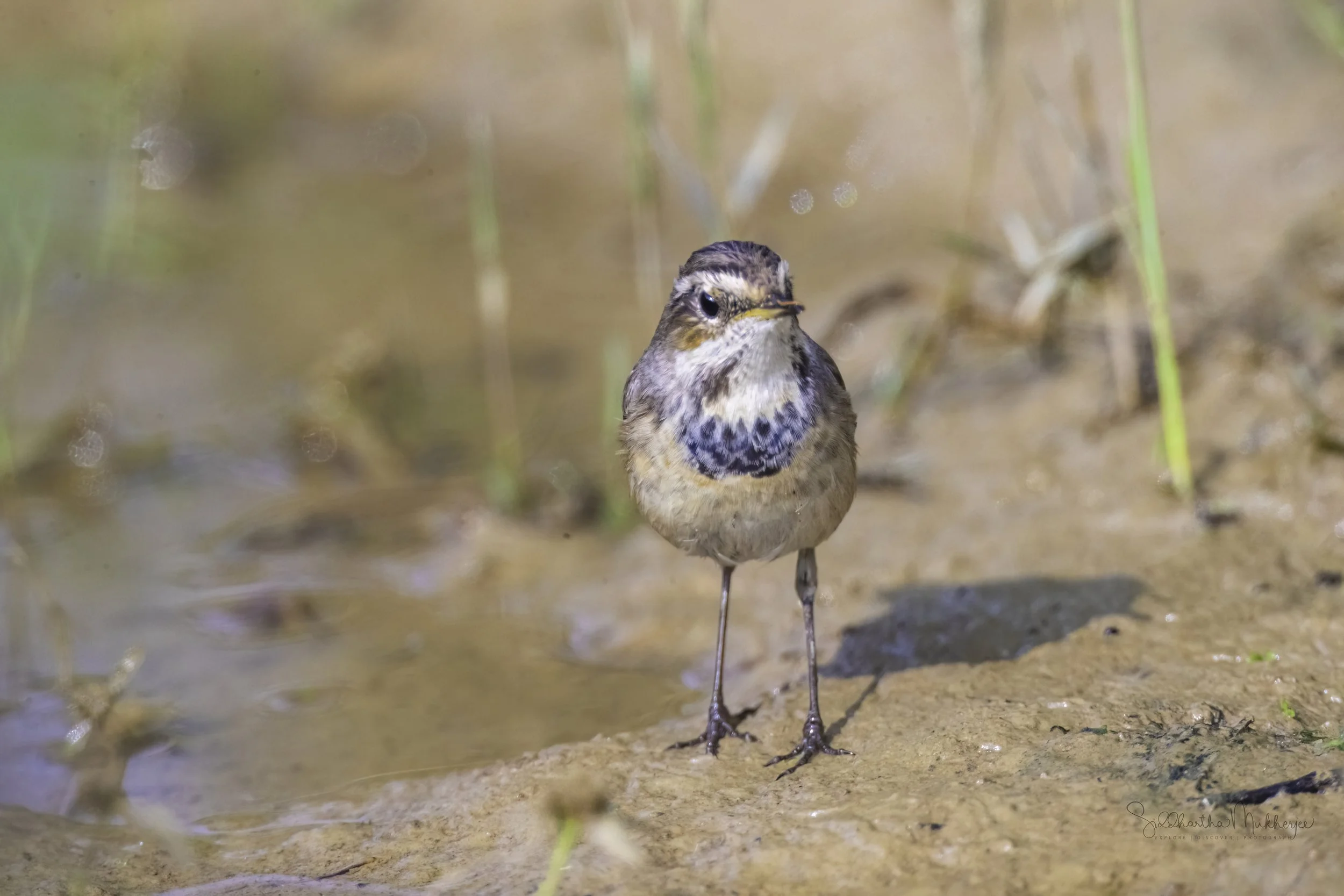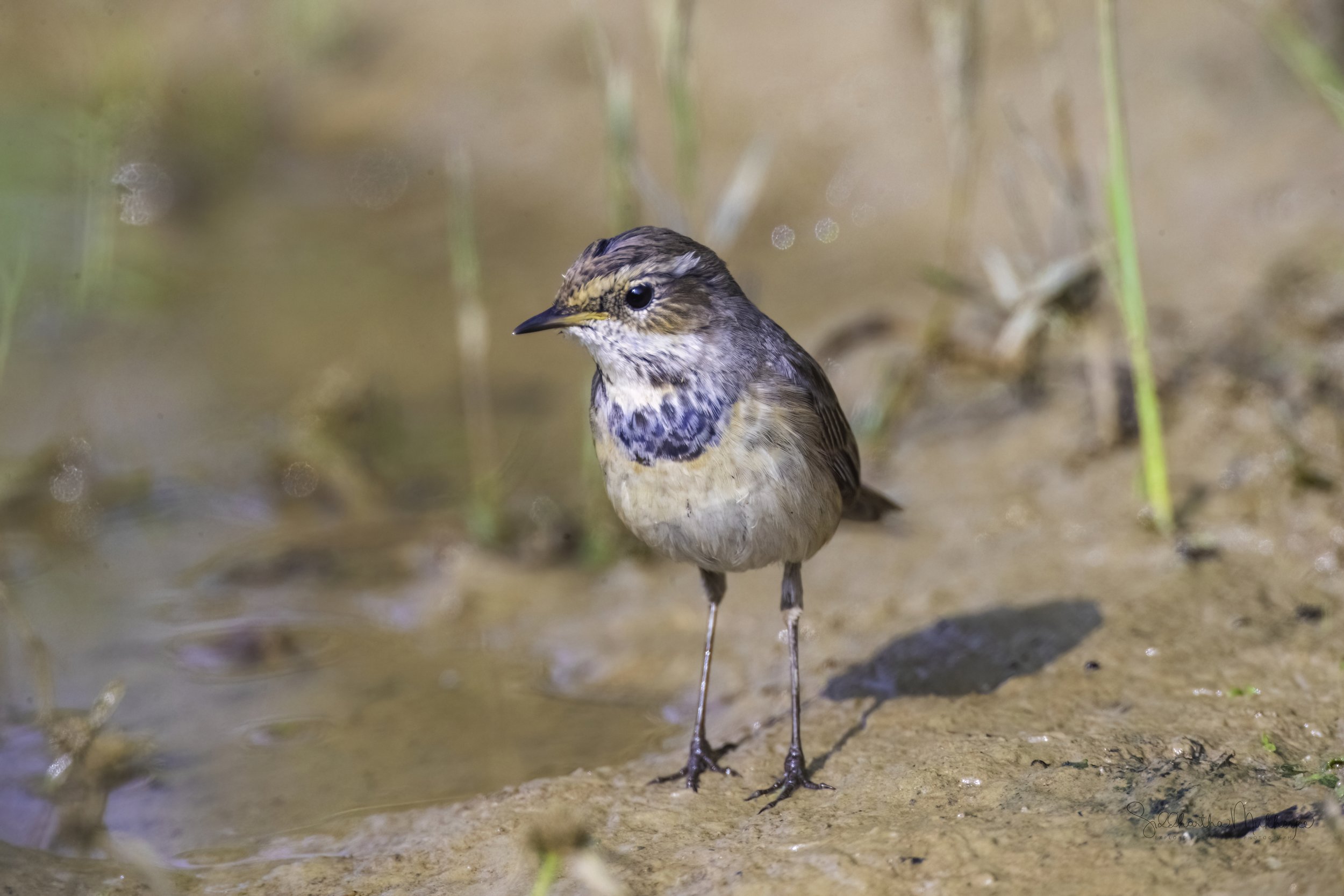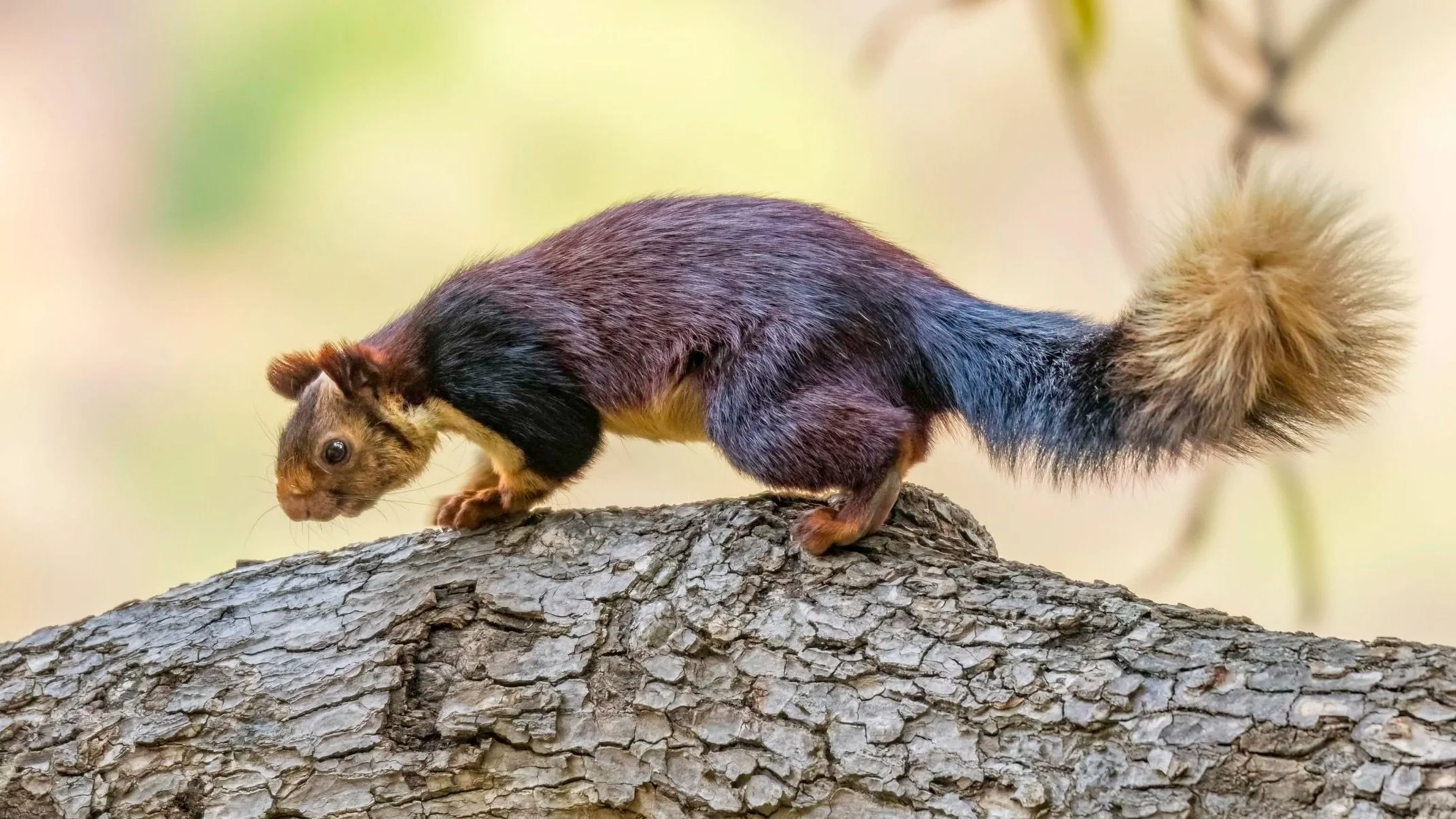Bluethroat
Luscinia svecica
Manjeera Wildlife Sanctuary
Every year among the multitudes of birds that winter in the Indian subcontinent there is a small, yet unmistakable, robin-like insectivorous species that comes too - the Bluethroat. In spring, the male Bluethroat (Luscinia svecica) is resplendent with his bright blue throat, bordered below with bands of black, white and chestnut. Its central throat spot can be white or chestnut, depending on which subspecies you are looking at -'white-spotted' or the more numerous 'red-spotted'. They can be quite secretive, flicking into the cover of a bush with a flash of their chestnut tail patches. They were formerly classed as a member of the thrush family Turdidae, but are now more generally considered to be an Old World flycatcher, Muscicapidae. It, and similar small European species, are often called chats.
The Manjeera Wildlife Sanctuary is situated along the river Manjeera at a distance of 5 km from the quaint town of Sangareddy and about 50 kms northwest of the capital city of Hyderabad. The sanctuary, spread over 20 sqkms, follows the course of the Manjeera River, a tributary of the mighty River Godavari, for 36 km and is also home to the Manjeera Bird Sanctuary and has a manmade reservoir which provides drinking water to the twin cities of Hyderabad & Secunderabad. It has nine small islands, including Puttigadda, Bapangadda, Sangamadda and Karnamgadda containing extensive marshy fringes, which act as nesting sites for aquatic birds. Additionally, a thick cover of trees provide nesting spots for other birds.
The vegetation found around this freshwater ecosystem is of the dry savannah type and the reservoir supports both submergence & emergent types of vegetation. The periphery is abundantly covered by the plant species of Typha, Ipomoea and Acacia while agricultural fields surround the reservoir and river.
Originally this riverine habitat was developed as a crocodile sanctuary to protect the Vulnerable Mugger Crocodile, a medium-sized broad-snouted crocodile, native to freshwater habitats from southern Iran to the Indian Subcontinent. Today between 400 and 700 crocodiles call this home along with over 70 species of birds, fresh water turtles, prawns, molluscs and various varieties of fish. I have also seen monitor lizards & cobras and am told there are Indian Hares, Wild Boar, Mongoose & Jackals.
By some counts there are over 73 species of birds seen here like the large flocks of common teals & cotton pygmy goose & ruddy shelduck. Upstream is home to a significant number of cranes and bar-headed geese and the native breeders like the Darter, Asian Openbills, Painted Storks, Eurasian Coot and the Black-crowned Night Heron. These I will write about soon too.
On the banks of the Manjeera river, in a village called Kalabgoor, there is a temple that is said to have been constructed some 800 years ago during the glorious reign of the Kakatiyas. The temple like all temples of legend has magnificent architecture and is entirely made of stone, with some standing pillars created out of a single block. The temple is dedicated to the lord Shiva and also houses other gods like Lord Krishna, Ganapati & the goddess Saraswati.
The sanctuary has an Environmental Education Centre consisting of a museum, a library, and an auditorium where films about birds and animals are shown daily. There are boat services available to take the visitors around the sanctuary for bird watching, with binoculars and books to identify birds provided to visitors. The museum has exhibits depicting the complex biodiversity of the wetlands. The best season to visit this sanctuary is from November to March when major migrant birds nest and breed here. Accommodation for visitors is available at inspection bungalows in the town of Sangareddy, Singur and Sadasivapet.
Bluethroat
The Bluethroat is a striking, beautiful species of bird whose main focal point is its clear, bright-blue bib, which is underscored by two stripes; one rust and the other black. As is typical among birds, the male Bluethroats display more extravagant plumage than their female counterparts, whose throats do not feature this blue patch. Upperparts on both males and females are grey, while the underparts are white. And, both birds have a habit of fanning their tails, exposing a chestnut-coloured patch near the tip of the tail.
Look closely and you may observe a slight difference between subspecies of Luscinia svecica; it is subtle and hardly noticeable, but one features a red throat spot, while the other a white throat spot. This is the main difference between White-spotted bluethroats and Red-spotted bluethroats. The clue to their names is, of course, this difference, and you can see in the photos here..
The bluethroat is a member of the chat family and like the larger thrushes, falls under the scientific umbrella of Turdidae. Turdus in Latin means thrush. There are some 300 different species of chats and thrushes within the Turdidae family some of which I have written about. In size they are similar to Robins, around 13 – 14 cm in length, albeit they have evolved somewhat longer and slimmer legs and they have a tendency to defend their territories quite aggressively with an emphatic song, and often do so in mid-flight.
It is a migratory insectivorous species breeding in wet birch wood or bushy swamp in Europe and across the Palearctic with a foothold in western Alaska wintering in north Africa and the Indian subcontinent. It nests low in dense bushes. It is often found in reedbeds and swampy ground because it prefers damp and wet habitats including moist woods and heaths. It is similar in size, shape and weight to the European Robin. The male’s summer, otherwise known as his breeding plumage, is distinct even accounting for the differences within the sub-species. It has a low, fast, flitting flight, generally over short distances between patches of cover.
The bluethroat breeds across the north of the palearctic region in northern Europe and Asia from Scandinavia right across to the Russian Far East and south into China. During the winter months they migrate south to Africa, the Arabian Peninsula, South and East Asia, the Indian sub-continent and Southern Europe. A small population also breeds in North West Alaska. There are twelve subspecies that generally differ in plumage and patternation confined only to the throat colour varying from red or rufous crescent shaped throat spots, to white spots or no throat spots at all and the throat being entirely blue.
There are two key subspecies of Bluethroat. The first is the less numerous White-spotted bluethroat; the other is the more numerous Red-spotted bluethroat. Both birds can be distinguished by their throat spots, whose colour determines the name. One can notice the chestnut-coloured throat spot on the Red-spotted bluethroat, and the white spot on the other. The subspecies variously breed in territories across the north of the palearctic through Russia including Siberia through to the Kamchatka Peninsula on the Russian Pacific coast and into Mongolia and Central China. The migrate in the northern winter to sub-Saharan Africa, the Arabian Peninsula, the Indian sub-continent and through to Myanmar and Thailand.
The bluethroat is a small, slim songbird. In breeding plumage the adult male has predominantly dark brown upper parts with much lighter greyish brown underparts. The wings are a plain mid brown in colour and the upper tail is dark grey bordered by a rufous patch at either side of the upper tail. A bold white stripe extends across the supercilium over the eye. Immediately below the lower mandible the chin and throat is a deep blue with a rufous red upward turned crescent shape, dividing the blue patch in the region of the upper breast. At the base of the blue patch there is a thin black and white band with a further rufous or orange brown area below morphing to the light grey of the remaining underparts. The legs are long and thin and coloured dark brown to black. The eyes are a dark brown and the bill black. In the non breeding plumage the adult male is similar although the distinct blue and rufous throat and coloured upper breast are far less obvious, being obscured by the pale tips of feathers. In general, the adult female replicates the non breeding colours of the male with the addition of white cheeks, a pale throat and with a dark breast band frequently spotted blue. Juveniles are mainly a dark brown on the upperparts, head and breast, streaked with buff to rufous markings and remaining underparts a pale grey. The rump and base of the tail is shaded rust red.
A master at mimicry the bluethroat has a powerful and melodious song often repeated and interspersed with short notes and softer lengthened trills. It frequently mimics other species of bird resident within its immediate area.
It forages on the ground, usually under dense cover and amongst leave litter to feed on small insects, caterpillars, spiders and insect larvae but also takes seeds and berries, although mainly in the autumn.
‡‡‡‡‡
Related Posts
















